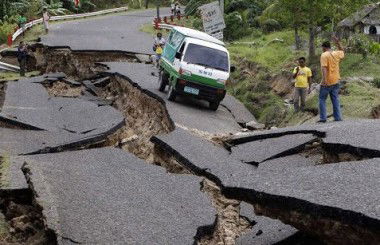Headlines
Nepal death toll 4,347, may touch 10,000

Kathmandu, April 28
The death toll from
Nepal's deadly earthquake has touched 4,347 and could go up to 10,000,
making it the country's worst ever temblor, Prime Minister Sushil
Koirala said on Tuesday.
Koirala's alarming assessment was
conveyed to the envoy of India, China and the US as an army of Nepalese
and foreigners worked feverishly to look for people who may still be
buried under Saturday's debris.
But even as international aid
poured into Kathmandu, with volunteers reaching some of the remotest
parts of the landlocked nation, it became clear that the Saturday
earthquake, 7.9 on the Richter scale, may turn out to be worse than the
one that claimed over 8,000 lives in 1934.
A worried Koirala met
the ambassadors of India and China -- Nepal's two largest neighbours --
as well as the US and said he feared the toll may be as high as 10,000,
his media advisor Prakash Adhikari told IANS.
He said the figure
was arrived at as nearly 4,400 people were already confirmed dead, many
of the thousands of injured were critical and a large number of people
were missing and may be dead.
More than 7,500 people have been injured in the quake. "It's a frightening situation," one official told IANS.
The dead include at least 10 foreigners -- from India, China, Australia, France and the US.
Nepal
meanwhile grappled with an acute water scarcity. In Kathmandu, women
and children holding plastic buckets and other utensils stood in queues
at many places to take their share of water.
With thousands of
houses destroyed or damaged beyond living, tens of thousands of men,
women and children spent a third chilly night out in the open in
Kathmandu.
Most have been in the same clothes they were in when
they fled their homes on Saturday after the powerful earthquake hit the
country.
Since then there have been countless aftershocks, sparking panic.
Many
people use plastic sheets and cardboards to sleep on. Blankets have
become a much sought after luxury, forcing the government to send out
appeals to the international community to send more aid -- and fast.
The
home ministry said Kathmandu and Sindhupalchowk districts, among the
worst hit, have reported 1,039 and 1,176 deaths respectively.
Rescuers,
including from India, are engaged in massive operations in Kathmandu
and other places. Hospitals are overwhelmed and treating many of the
wounded in the open due to lack of space.
Some hospitals have
reported cases of diarrhoea. Medical waste has also started accumulating
in various hospitals, said Basudev Pandey at the main hospital at
Patan, near Kathmandu.
He said several people from villages near Lalitpur, a nearby city, had also reported diarrhoea.
Water scarcity, lack of debris management and waste management have worsened the condition in Kathmandu's hospitals.
Power
outages continued, crippling many ATMs. There are few vehicles on
Kathmandu's streets. Food and other essential items are in short supply
-- sparking anger and disaffection with the pace of relief work.







































